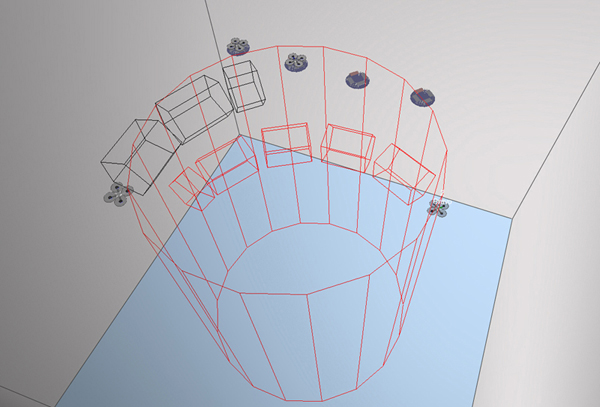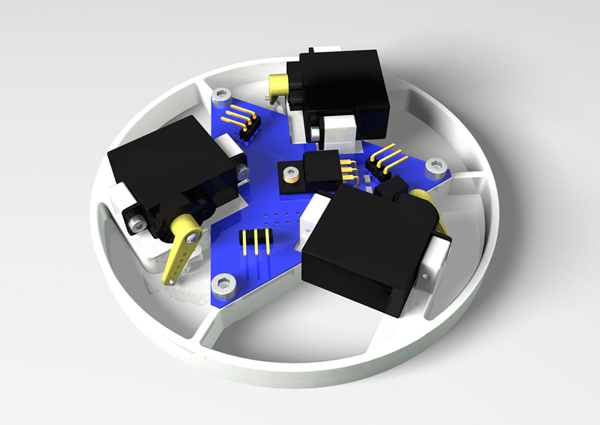Flying Machine Enabled Construction
This page presents the system that enabled the Flight Assembled Architecture installation. The system is built upon the Flying Machine Arena platform with specific components developed to manage and perform construction. The Flight Assembled Architecture installation demonstrated the ability of aerial vehicles to build structures. It also served as a proof-of-concept for the research project aerial construction. The Flight Assembled Architecture is described in the following paper:
Image Gallery
-
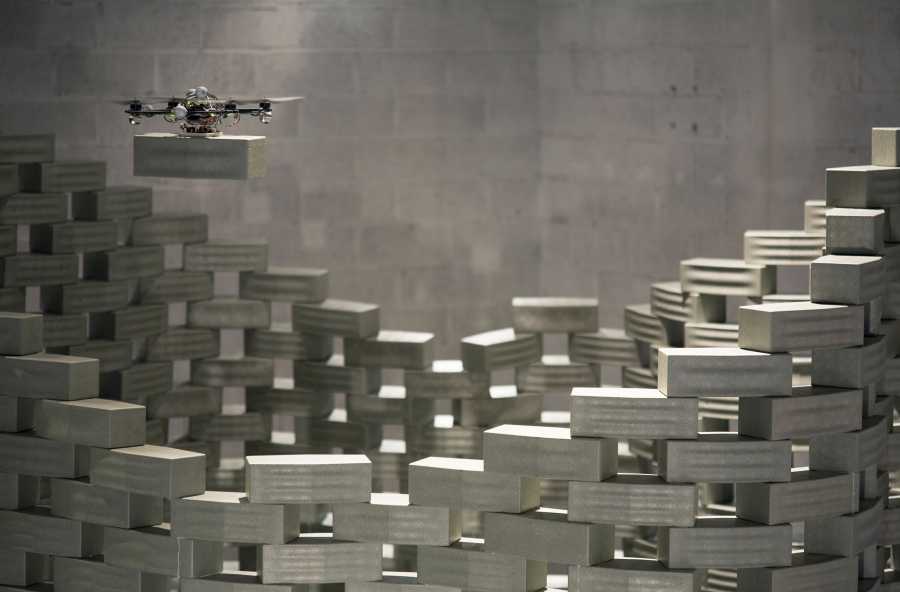
-
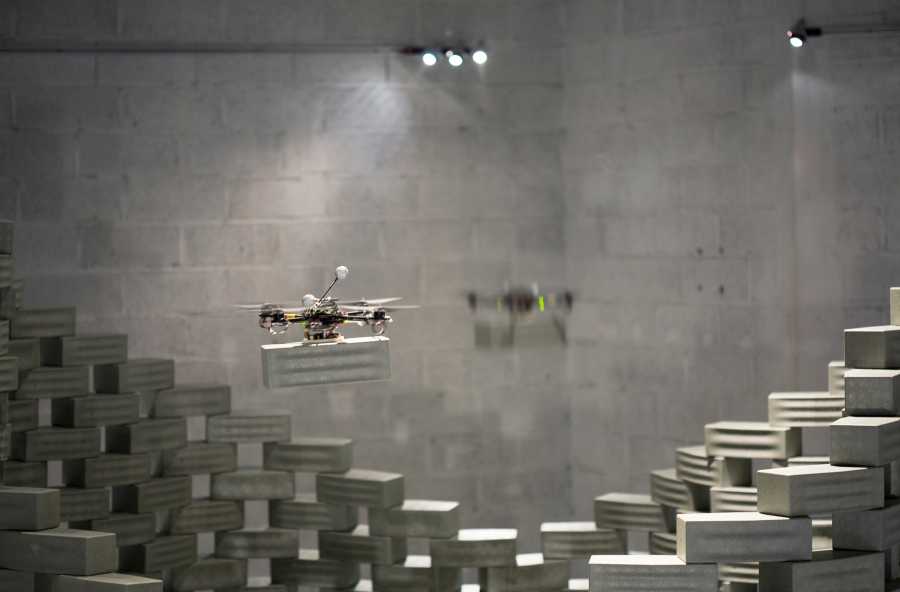
-
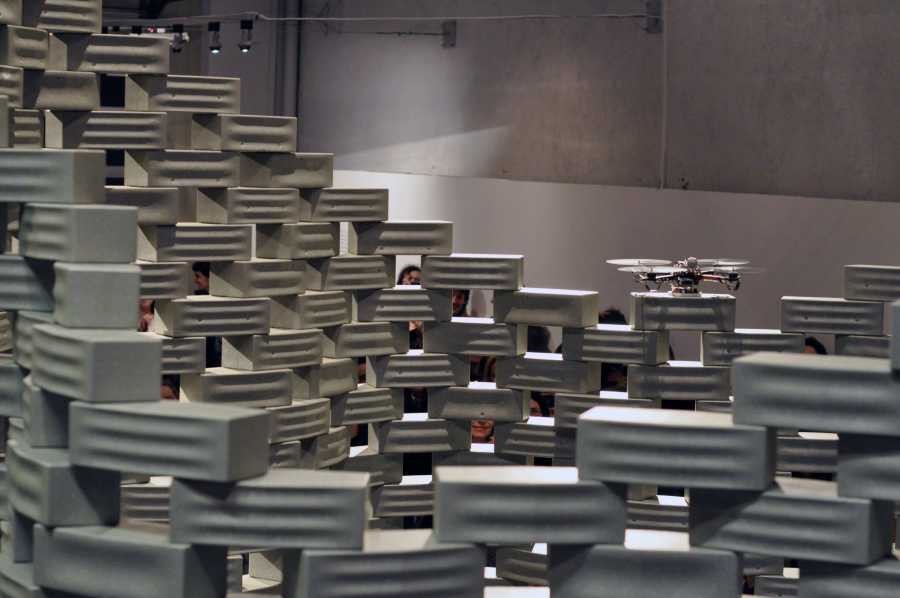
-
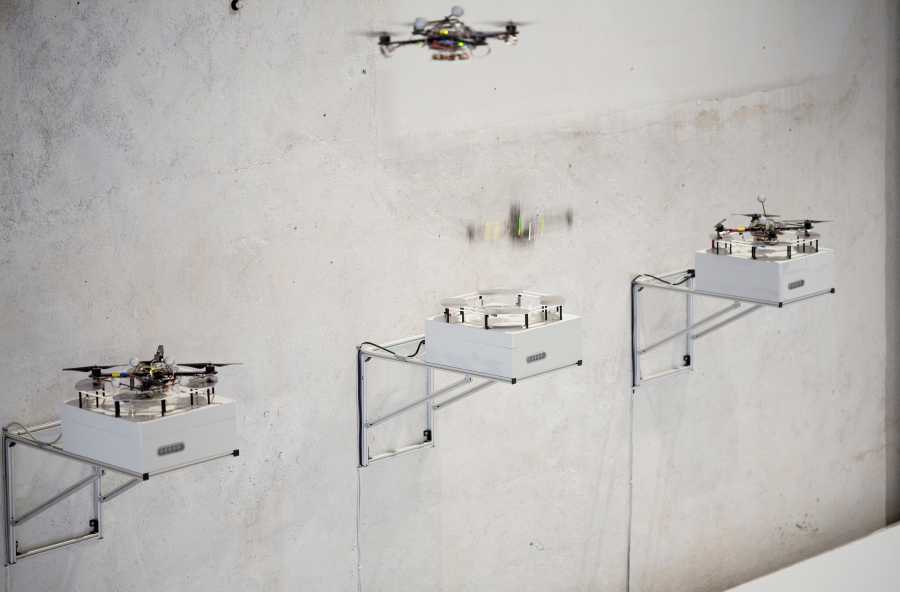
© François Lauginie -
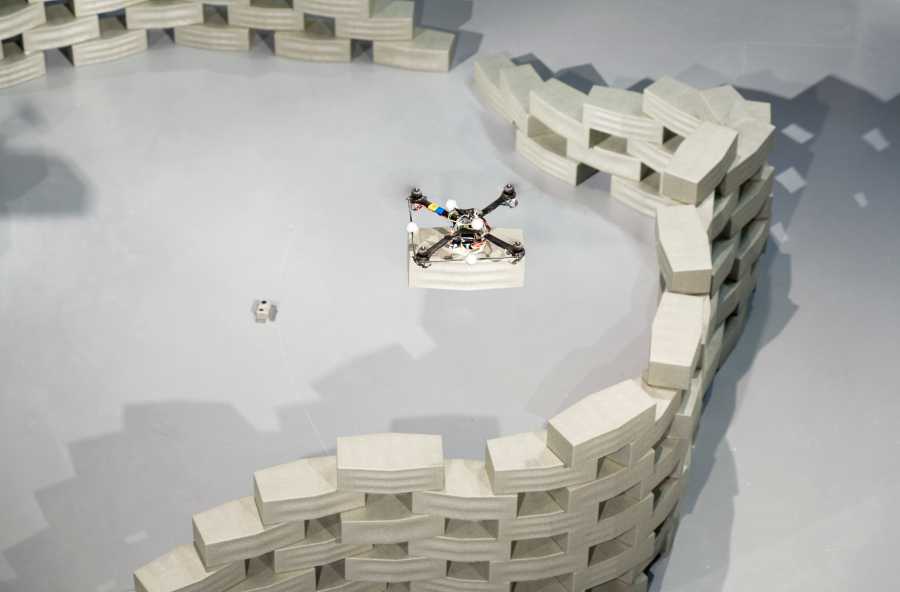
-
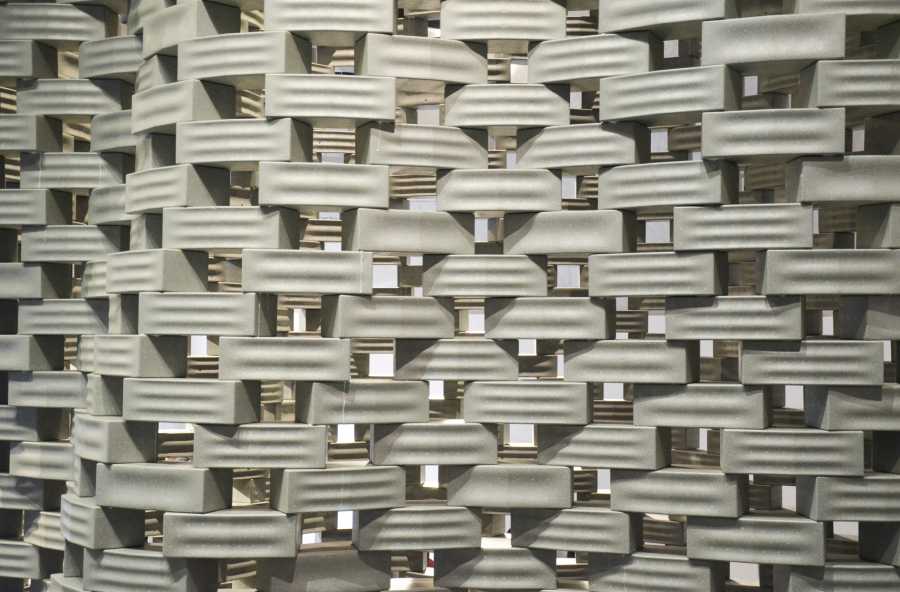
Flight Assembled Architecture, a collaboration with architects Gramazio & Kohler, is an exploration in aerial construction. Conceived as a 1:100 model of a 600 m high vertical village, the four day long, live exhibition featured four quadrocopters building a 6-meter tall tower out of 1500 foam bricks. The exhibition took place at the FRAC Centre in Orléans, France from December 1 to 4, 2011. The FRAC Centre is an architectural art museum in the outskirts of Paris that promotes contemporary art, both nationally and internationally. During the opening night the museum hosted 300 enthusiastic people.
The Blueprint
The Blueprint is a file that establishes how the structure will be constructed. It holds information such as brick location and the order in which parts should be assembled.
The Foreman
The Foreman manages the overall construction process by interpreting the blueprint, issuing build-orders to the Crew, and tracking the construction progress based on their feedback. It is also the means by which the system interfaces to the outside world via a user interface. Using the Foreman, the number of flying vehicles in flight at any one time, as well as the rate (in Bricks Per Hour) can be controlled.
The Crew
The Crew is responsible for interpreting the Foreman's build-orders and based on these, building the structure. The Crew subsystem manages the flying machines at all levels, including coordinating recharges, planning trajectories with collision avoidance, managing the pick-up and placement of bricks, and generally controlling the in-flight dynamics.
The Configuration
The configuration file contains the operational parameters, such as the usable space dimensions, flight "freeway" definitions and properties of the building materials, as well as parameters relating to system behaviour such as pickup/placement tolerances, flight speed & aggressiveness and parameters to control battery management.
To coordinate flying and avoid collisions, the vehicles use two freeways that encircle the structure. Usage of the freeways is controlled by a space-reservation system, whereby each vehicle reserves the space required for a trajectory before the trajectory is flown. This space is then unreserved once the trajectory is completed. This system ensures that while a space is reserved, only the reserving flying vehicle has access – all other vehicles must wait before flying through this space.
This system is also used to stop collisions with the tower. In this situation, the entire tower is reserved, thus preventing any vehicle from planning a trajectory through this space.
Both freeways as well as the space reservation system can be seen in the image below, where the black and red "tubes" represent space reserved for each trajectory – one on each freeway.
Being able to accurately and reliably place a brick is fundamental to a successful construction. Many ideas, iterations and fine-tuning showed that the most accurate and reliable method of placing a brick, is to "fly" it quickly into place, avoiding significant disturbance due to turbulences or ground effect.
Starting at a specified distance above the brick, the vehicle plans a trajectory that will result in the brick being flown into the structure with a specified velocity. Testing showed that lower impact velocities (and thus gentler landings), were significantly affected by turbulence and ground-effect around the structure. For this reason, a faster and more aggressive impact is favored.
F. Augugliaro, S. Lupashin, M. Hamer, C. Male, M. Hehn, M.W. Mueller, J. Willmann, F. Gramazio, M. Kohler, and R. D’Andrea, “The Flight Assembled Architecture Installation: Cooperative construction with flying machines”, IEEE Control Systems Magazine, Volume 34, Issue 4, 2014, pp. 46 – 64
external pageDownloadcall_made
February 24, 2012
external pageDaily Planet – The latest and greatest in science and technologycall_made
January 30, 2012
external pageDaily Planet – Robots build without human interferencecall_made
December 2, 2011
external pageReuters – Flying robots, the builders of tomorrowcall_made
December 1, 2011
external pageFRAC – Architectures Volantescall_made


